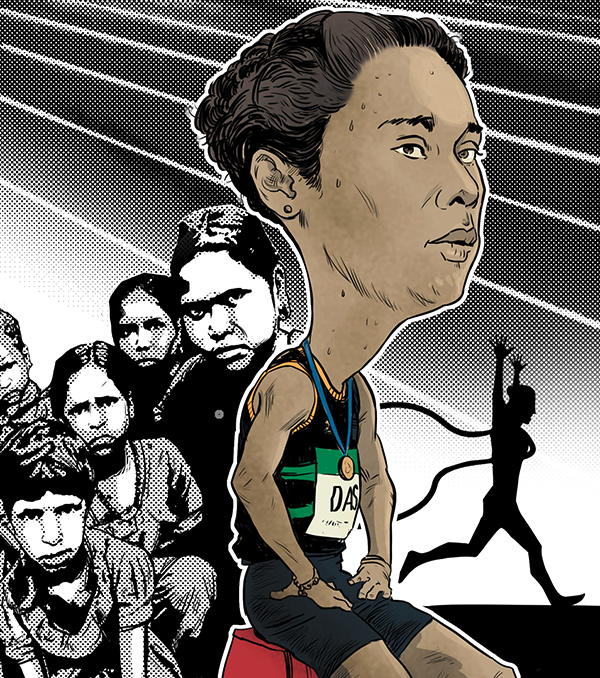The 18-year old-girl from the Kandulmari village of the Indian state of Assam, who won the gold at the IAAF World Under-20 at Tampere, Finland, last Friday, said in an interview she was not running for gold, but for time; perhaps the time of her life. Some half a billion hardy and impoverished women run with her, unseen, towards the finishing line.
Hima Das’ often unshod run from the paddy fields and rough turf all the way across mountains and seas to the end of the track in Tampere has been a kind of obstacle race representing the gut-wrenching poverty and hardships of the Indian woman, her basic rights elusive as their country’s search for gold in international track events.
The July 5 issue of The Economist ran a cover on How India Fails Its Women. The report said: ‘The female employment rate in India, counting both the formal and informal economy, has tumbled from an already-low 35 per cent in 2005 to just 26 per cent now. In that time the economy has more than doubled in size and the number of working-age women has grown by a quarter, to 470 million. Yet nearly 10 million fewer women are in jobs. A rise in female employment rates to the male level would provide India with an extra 235 million workers, more than the EU has of either gender, and more than enough to fill all the factories in the rest of Asia.’
Presumably the time that went into gathering the material of the report is roughly the period when Hima Das’ training for the IAAF event must have peaked. Ironic? The gold she won is a kind of reply in kind to the mostly true but patronising article. For a nation of cricket and football fans, Hima Das’ run of her life is virtually without a context. Which is how one also explains to oneself the non-availability of a single native media reporter at Tampere to catch a special moment in the sports history of India. Clearly, no one expects much from athletics. From Hima, either.
Hima’s village of Kandulmari is paddy rich and dirt poor. She comes from a 17-member joint family. Her best friends are a gang of 7 boys, and she does pretty much what she pleases. She graduated from football and racing up the hill against cars to running a little over three years ago against the wishes of her family, especially her mother. Her story is that of kick-ass courage and shut-your-face talent. Conventions melt in the face of such a rare combination.
In the post-Tampere euphoria, the government has announced a whole array of gifts and rewards which are meant to take care of Hima to Tokyo Olympics in 2020. Naturally, no one has pointed out that Hima’s gold winning timing of the 400m event at 51.46 seconds is way behind the unbroken world record of Marita Koch in 1985. Koch ran the event in 47.60 seconds. Hima’s own personal best is 51.13, clocked in national event. So realistically speaking, Hima has a lot to catch up.
Great vanishings
And that is precisely where her challenges as a natural born athlete and the materialist Indian sensibility clash. India worships success, but does not set much store by the exhausting efforts that go into great achievements, and perhaps even greater failures. Athletes have flashed before the public, showing promises, and burning out like meteors for any number of reasons. General neglect, petty politics, and corruption at federation level, and just plain poverty. And no one has raised a sustained eyebrow at the great vanishings.
One of the states in India, Kerala, for example, has traditionally been a track and field country — though soccer star Maradona in a mundu (garment worn around waist) proclaims from hoardings by the wayside the purity of gold chains crafted in a local shop. The state usually dominates the national athletics. Tracks stars have come and gone without a trace. Just a few years ago, the star that could not stop rising was E. M. Indulekha. Soon after school, she disappeared. Recently a TV reporter ran into her in a private company in Kochi, where she works as a customer relations executive. There are scores of champs like Indulekha. India loses them out of brutal neglect.
Hima Das is likely to have escaped that fate. She represents the rise of the rural girl child over urban everything. That’s saying a lot in a culture where female foeticide is by and large still accepted. If India wants to see more Himas hugging the national flag at international arenas, it must take care of their hearth. Heart, too. And fast. Like Hima Das. Because she is running to make up for India’s lost time.
C.P. Surendran is a senior journalist based in India.











